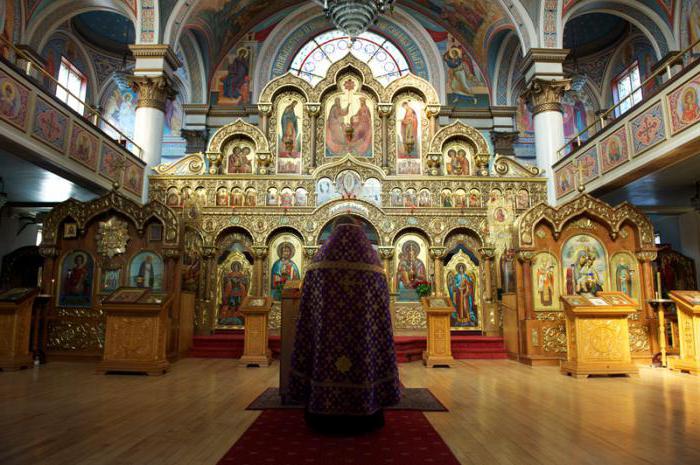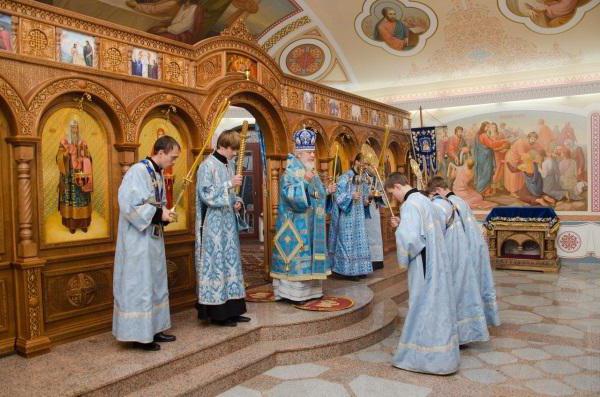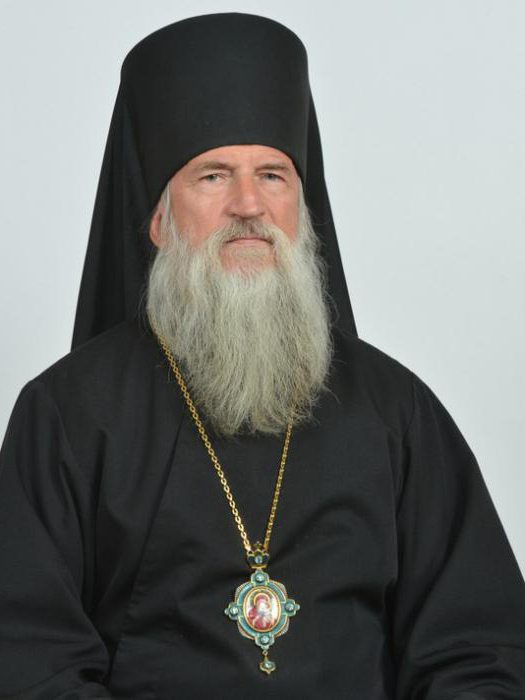Many of our compatriots know thatterritory of Russia there is the Stavropol and Nevinnomyssk eparchy. It was formed in 2011. Previously, there was the Stavropol and Vladikavkaz diocese. And when, with the blessing of the Holy Synod, part of the territory was separated from it, then this religious association arose.

The first Christians in Stavropol land
Christianity came to the North Caucasus very early- in the first century of the Nativity of Christ. Here the apostles Andrew, Bartholomew, Simon Kanayt preached. The Diocese of Stavropol keeps one pearl. Believers from all over the world come here to look at the face of Jesus Christ, depicted on one of the rocks of Arkhyz in Karachay-Cherkessia. The time of creating the image of the Savior remains a mystery.
Lik painted on the Orthodox canon, addressedstrictly to the east. It was created in a laconic color scheme, characteristic of Byzantium 9-11 centuries. Perhaps this is the very first image of the Lord in Russia. The Arkhyz face was discovered recently, on the eve of the 2000th anniversary of the birth of Christ.
The weakening of Byzantium, the spread of Islam,The invasion of the Mongol-Tatar yoke led to the fall of the Christian religion in the North Caucasus. The revival began under Tsar Ivan the Terrible. After Astrakhan was captured, the Russian Cossacks, which were striving for new suburbs, put their first stanitsas there.

Temples of the diocese
The temples of the Stavropol diocese are diverse.So, in Cherkesk stands the Church of the Intercession of the Mother of God, which is more than 350 years old. They say that when the Cossacks resettled, they dismantled and took with them a shrine, which was first installed in the Stavropol fortress. And when the location of the dislocation moved even closer to the foothills, the Cossacks again dismantled the church and took it with them. They put it in the village, which later was renamed the city of Cherkesk. Then the church was twice transferred.
A hundred years ago in the territory of the Stavropol Territorythere were 250 churches and three monasteries, more than 200 parish schools. In addition, there was a theological seminary, and the public organization Andreevo-Vladimirskoye brotherhood consisted of about five hundred people. Then, during the repressions in the territory of Stavropol, only three churches remained active.

Stavropol deanery
The Metropolitanate of Stavropol includesseveral deaneries: the first, the second Stavropolsky district and the third Stavropol district, as well as the Mikhailovskoye, Grachevskoye, Novoaleksandrovskoye, Medvezhensky, Izobilnenskoe, Don and Svetlograd deaneries. The Diocese of Stavropol now has 142 functioning temples. The number of clergy reached 137 clerics.
The Diocese of Stavropol recentlydevelops. There is a plan of 20 to 20, that is, until 2020 they want to build 20 churches in Stavropol. This and other pressing problems were made by Metropolitan Kirill of Stavropol and Nevinnomyssk in his speech at the parliamentary meeting in the framework of the sixth diocesan Christmas readings.
By the way, his worldly name is Leonid NikolaevichPokrovsky. He was born in 1963 in the city of Miass, Chelyabinsk region. Father, grandfather and great-grandfather were priests. In 1884, the future metropolitan entered the Moscow Theological Seminary and brilliantly completed it. He also studied at a theological seminary in Sofia. In 1989, at the Holy Trinity Sergius Lavra, he was tonsured as a monk. In the same year, they ordain to be a hieromonk. July 18, 2012, Cyril's father is elevated to the rank of Metropolitan.

Female home
Metropolitan Stavropol, in addition to the churches, in itsthe composition also has a female abode. This is the Ioanno-Mariinsky Monastery, located in the city of Stavropol, and on the territory of a psychiatric hospital. The shrine is a small two-story house with twelve inhabitants. Nuns contain a garden, raise a bird, collect medicinal plants, meet and place pilgrims. They spend many hours in prayer.
Mother Superior is Mother John (in the world of Anna).This holy dignity she received with the blessing of the archpastor. She grew up in a believing family. The father served as a sacristan, and the mother took monastichood shortly before her death. Anna got married. Her husband served as a priest. But after Anna's daughter got married and her mother passed away, she decided to accept monasticism. The marriage was canceled. The husband also became a monk, then he was appointed bishop in Rybinsk.
The Diocese of Stavropol adopted Mother and hersisters. At first it was very difficult, but soon everything was arranged with God's help. After her came other nuns. Older women found their shelter here, and with the young hegumeness holds long conversations and not all bless to become nuns.












